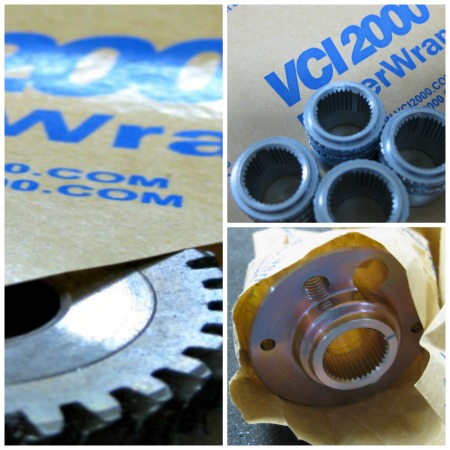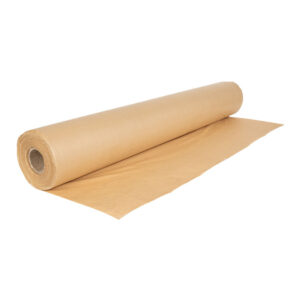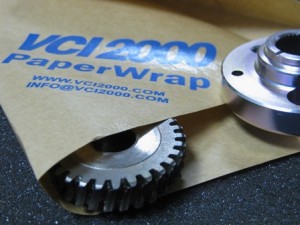VCI is a revolutionary method that shields metal surfaces from rust and corrosion. VCI paper works by releasing molecules that form a protective layer on metal surfaces, keeping rust at bay. This layer is invisible, odorless, and harmless to both humans and the environment, making VCI paper a safe and effective choice. Industries like automotive, aerospace, and shipping have embraced VCI paper for its unparalleled rust-prevention capabilities.
The science behind VCI paper is based on a process called chemical adsorption. When VCI molecules are released from the paper, they attach to the metal surface, forming a protective layer. This layer inhibits the formation of rust by neutralizing the corrosive elements present in the environment. VCI technology is highly effective at preventing rust and corrosion, even in extreme conditions.
Unlike traditional methods, VCI paper provides continuous protection over an extended period of time. It can protect metal parts during storage, transportation, and even in harsh outdoor environments. VCI paper is easy to use and requires no extra steps or maintenance – simply wrap or store your metal items with it.
VCI technology has been extensively tested and proven to be a reliable solution for rust prevention. Whether you are storing tools, machinery, or valuable metal items, VCI paper ensures their long-term preservation. The unique properties of VCI paper enable it to protect metal against multiple types of corrosion, such as pitting and uniform corrosion. Its versatile nature makes VCI paper a cost-effective solution, preventing the need for expensive repairs or replacements.
Understanding the Basics of Rust Formation
Rust is a reddish-brown coating that occurs on iron or steel surfaces when oxygen and moisture come into contact. It is a chemical reaction called oxidation, where iron combines with oxygen to form iron oxide. Rust can cause serious damage to metal objects, leading to weakening or even complete destruction over time. To prevent rust formation, many industries use VCI paper, which stands for Volatile Corrosion Inhibitor paper.
VCI paper contains chemicals that release molecules that neutralize the corrosive effects of oxygen and moisture. This process helps to keep metal surfaces rust-free for extended periods. VCI paper is often used for packaging and storing metal objects, such as automotive parts, machinery, and tools.
One of the key advantages of VCI paper is that it provides a protective layer on the metal surface, preventing direct contact with oxygen and moisture. The chemicals in the VCI paper create a barrier that inhibits the formation of rust on the metal.
VCI paper releases molecules that form an invisible, corrosion-inhibiting layer on the metal surface. This layer prevents the oxidation process and keeps rust at bay. VCI paper is effective for a long duration, providing protection to metal objects for weeks, months, or even years, depending on the quality and type of paper used. It is important to note that VCI paper should be stored in a clean and dry environment to maintain its effectiveness. Additionally, VCI paper is safe to handle and does not leave any residue on the metal surface after removal.
How VCI Works to Prevent Rust?
VCI paper is a simple and effective way to prevent rust on metal objects. When metal objects are wrapped or enclosed in VCI paper, they are protected from rust and corrosion. The secret lies in the VCI chemicals that are infused into the paper. These chemicals create a protective layer around the metal, preventing moisture and oxygen from reaching the surface. This layer inhibits the formation of rust by neutralizing the corrosive elements.
VCI paper works by releasing molecules that form an invisible shield around the metal surfaces. The VCI molecules are released through a process called sublimation, where they change from a solid to a gas. This gas phase diffuses throughout the enclosed space, reaching every nook and cranny. The VCI molecules will adsorb onto the metal surface, creating a protective layer that prevents rust.
VCI paper is versatile and can be used for various metal objects, including tools, machinery, automotive parts, and even firearms. It is normally utilized in industries consisting of manufacturing, construction, and transportation. The protective properties of VCI paper can last for extended periods, providing long-term rust prevention.
VCI paper can also be used in conjunction with other packaging materials for additional protection. It is important to properly seal the VCI paper packaging to maximize its effectiveness. When storing metal objects, ensure that the environment is clean, dry, and free of any chemicals that may react with the VCI. By using VCI paper, you can significantly extend the lifespan of your metal objects and reduce maintenance costs.
VCI paper is available in various forms, such as sheets, rolls, and bags, for different packaging needs. It is recommended to use VCI paper that is specifically designed for the type of metal being protected.
The Importance of Molecular Structure in VCI Technology
The structure of these molecules determines their ability to cling to metal surfaces and create that protective layer. Therefore, the right molecular structure is crucial for ensuring long-lasting corrosion protection. There are different types of VCI papers available in the market. These papers are infused with the VCI compounds that release the corrosion-inhibiting molecules. The molecular structure of these compounds is designed to target specific metals and protect them from corrosion. For example, there are VCI papers specifically designed for steel or aluminum. The molecular structure of these papers is optimized for maximum effectiveness on these metals.
Once a VCI paper is placed near a metal surface, the VCI molecules are released into the air. These molecules have a natural attraction to metal surfaces and form a thin, invisible layer on the metal. This layer works as a barrier and prevents the corrosive elements from reaching the metal. The molecular structure of the VCI compounds determines how long the protective layer will last.
One key factor that determines the effectiveness of VCI technology is the molecular structure of the VCI paper. The molecular structure refers to the arrangement and connectivity of atoms within the VCI molecules. The structure of VCI molecules affects their ability to form a protective layer on the metal surface.
A well-structured VCI paper will have a controlled release rate, ensuring continuous and effective corrosion protection. The molecular structure can be modified and optimized to enhance the performance of VCI technology.
Exploring the Corrosion Inhibiting Properties of VCI
VCI is a chemical compound that can prevent or delay the corrosion of metals by generating a protective barrier. One commonly used form of VCI is VCI paper, which is infused with the corrosion inhibitor compound.
The VCI vapor molecules form a thin layer on the metal surface, preventing moisture and oxygen from reaching it. This layer acts as a shield, significantly reducing the chances of corrosion occurring. The inhibiting vapor can migrate through the air, reaching even hard-to-reach areas and protecting every surface. Unlike traditional rust prevention methods, VCI does not require constant maintenance or reapplication.
When using VCI paper, it is important to ensure proper packaging to maximize the protective effects. The paper should be tightly sealed around the metal object to create a closed environment. VCI paper is effective not only for short-term storage but also for long-term preservation of metals. Additionally, VCI is a versatile corrosion inhibitor that can be used with a wide range of metals and alloys.
The Future of Rust Protection: Advancements in VCI Technology
Rust is a common problem that affects metals, causing corrosion and degradation over time. Traditional methods of rust protection include painting, coating, or applying protective films. However, these methods are not always effective in preventing rust, especially in harsh environments or when the metal is exposed to moisture. That’s where VCI technology comes in.
The VCI molecules attach themselves to the metal, forming a barrier that inhibits the corrosion process. This technology has been around for decades, but recent advancements have made it even more effective and reliable. Manufacturers are now developing VCI products that are not only long-lasting but also eco-friendly. These new products use organic compounds that are non-toxic and biodegradable, making them a safer and more sustainable choice.
Another exciting development in VCI technology is the use of nanotechnology. Nanoparticles can now be incorporated into the VCI formula, enhancing its performance and extending its protection. These nanoparticles form an ultra-thin coating on the metal surface, making it even harder for rust to penetrate. The integration of nanotechnology with VCI technology has opened up new possibilities for long-term rust prevention.
The advancements in VCI paper technology have made it more efficient and long-lasting. Some VCI papers can provide protection for up to 10 years, ensuring the extended lifespan of metal items. In addition to protection against rust, VCI paper can also prevent fingerprints and other surface contaminations.
This makes it ideal for preserving the appearance and quality of metal surfaces. As industries continue to rely on metal for various applications, rust protection becomes increasingly important. VCI paper offers a reliable and innovative solution to this problem.






